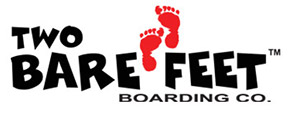Skate FAQs
Learn more about our skateboards, longboards and surfskates by reading through our most commonly asked questions.
1. What are the different types of skateboards?
At Two Bare Feet, we have 3 different types of skateboards available:
- Classic Skateboards - classic shape of double kick skateboard which allows you to complete tricks from both ends of the board, helping you to display your tricks and practice.
- Longboards - categorised into different types depending on your riding style and our boards can be perfect for freeriding, cruising and carving.
- Surfskates - boards are designed for carving, their special front truck allows movements similar to surfing.
2. How do I choose between a skateboard and longboard based on my riding style?
Choosing between a skateboard and longboard should be decided based on your riding style and what you want to do.
A double kick skateboard is designed for performing tricks and to be ridden at a skatepark. Having kicktails each end of the board allows you to skate in either direction, giving you the ability to practice many different tricks. The short length and design of the trucks and wheels helps to make it much easier to use on rails, ramps etc.
Longboards are suited to many different pursuits, whether you’re looking for a board that offers comfortable cruising and commuting around town, freestyle riding, longboard dancing or downhill riding, then a longboard would be better suited.
3. What are the physical differences between a skateboard and longboard?
In terms of the physical differences of the boards, both the size and shape vary.
Skateboards will vary only slightly in length, ranging from 31-32 inches, whereas longboards can measure from 31 inches to 44 inches. Their shape differs, as the classic skateboard is almost always the same in the symmetrical shape with curved edges and feature double kick ends that curve upwards. A longboard on the other hand offers much more of a variety in shape, profile, and material. You will have more of a choice in terms of the nose and tail options, a pintail board will feature a pulled in and narrow pointed nose and tail, a blunt board will feature a wider, rounder nose and tail and a twin-tip board that tapers into points at both ends.
The trucks on longboards either be the width of the deck or slightly wider to add stability. They will be significantly longer than those on a classic skateboard while the trucks on a classic skateboard should be at the same width as the deck.
Longboard wheels will also be larger than the wheels on a classic skateboard, they have a greater diameter to offer a smoother, faster, and stable ride. On the other hand, skateboard wheels will be smaller and harder making them more suitable for performing tricks.
4. What is the difference between a longboard and a surfskate?
With Surfskate trucks there are more possibilities in movements - when shifting weight, purely from a tilting movement of the toe towards the heel, speed can be built up. This is known as pumping and it makes it possible to ride much faster without having to lift your feet off the board. The body movement required for this comes close to the motion sequences used during surfing.
A longboard will offer a roomier foot platform and larger wheels compared to a surfskate. This provides a larger foot platform for leisure riding and bike trails and are great for cruising.
5. What skateboard would be suitable for my child?
Although some skate shops sell boards that are specifically aimed at kids, there is no reason why a standard adult deck size would not suffice. The width of a classic skateboard for older children and adults typically ranges between 7.75” and 8.5”.
As long as the child can stand comfortably on the board deck without having to stretch their legs to far to cover both ends there is no harm in skipping the children’s version and going with an adult model. However, this does tend to apply to children more over the age of 7, if any younger, a smaller model would be suitable for them.
Younger children can struggle to break their fall and find it hard to judge the speed of movement which can result in some injuries. It might be better for beginners to start out practicing on the lawn. Older children may be better equipped to gauge potential hazards. For young and little skaters, ensure they are always supervised and properly kitted out in safety gear when on the board.
6. Does my TBF skateboard come already assembled?
The majority of the boards we sell are supplied fully assembled however, they will not necessarily be set up and completely ready to ride. Never ride your board straight out of the box without first inspecting it in detail and fine-tuning all the fixtures and fittings. You will need to follow some basic steps to become familiar with your board, ensure that it is safe to use and to get it set up the way you want to ride it. You can refer to the Skateboard User Guide for the step-by-step process on how to set your board up.
